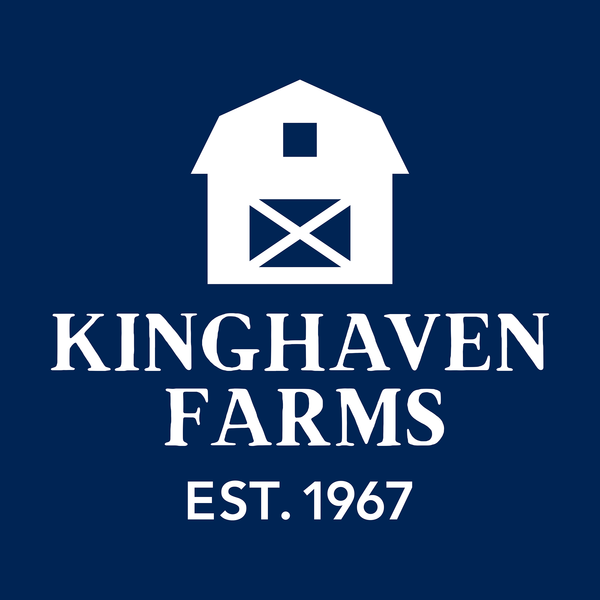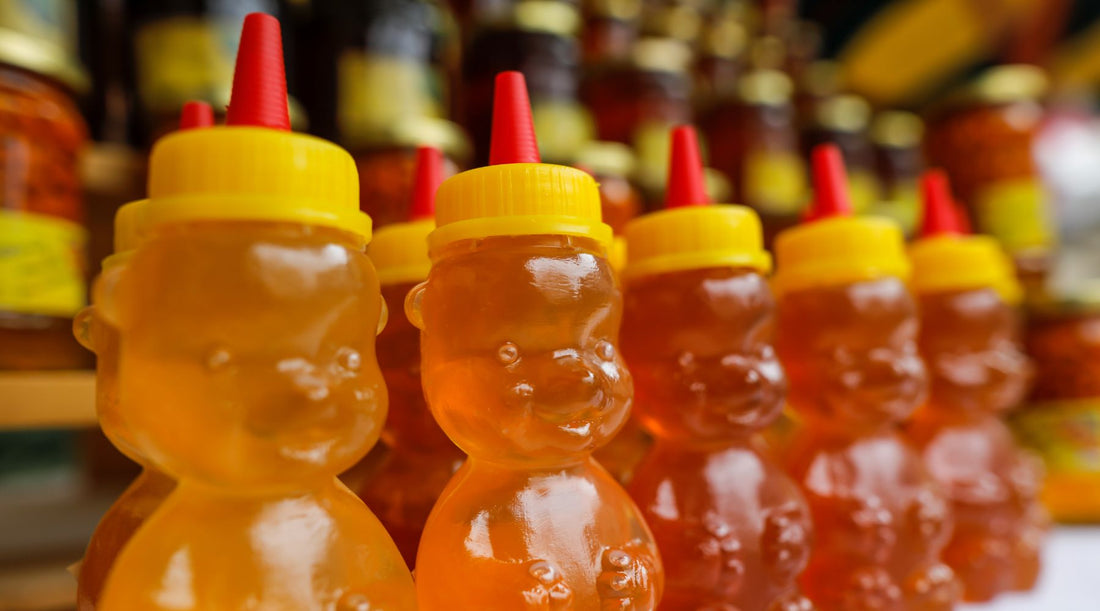Food fraud — never two words you want to see together. The idea that the food you eat or feed your loved ones isn’t what it claims to be is disturbing. In some cases, it can even be downright unsafe.
Luckily, dangerous food fraud — involving toxic substances like lead or undisclosed ones like peanut oil — is relatively rare. However, dishonestly swapping out one food for another isn’t as infrequent as you might think (or hope). Unfortunately, some foods, like honey, are regularly the target of this practice. And it’s becoming more frequent.
Why is honey such a target for food fraud?
The simple answer to why honey is so likely to be fake is price. A CBC article from 2019 estimates that genuine honey producers need to charge about $2 a pound in order to cover their costs.
In contrast, because their “honey” is full of cheap fillers like rice or corn syrup or plain old sugar, fake honey dealers can sell theirs for $0.20 a pound and still turn a profit. As a result, they can undercut genuine honey producers significantly. The steep rise in food prices since 2019 has likely only amplified this factor.
The taste of honey also means that it can be blended with cheap sugar syrups or other additives while (sort of) maintaining its overall flavour. This makes it difficult for the average consumer to tell just by taste whether their favourite golden liquid is what its packaging claims.
The reason honey fraud is so prolific is opportunity. Canada receives honey imports from all over the world and the sheer volume of these means not all products can be inspected. All told, these factors account for why adulterating honey — sometimes known as honey laundering — is one of the most common types of food fraud.
How much of a problem is honey laundering?
Honey is one of the top faked foods in the world. Over a 14-week period in 2018, the Canadian Food Inspection Agency (CFIA) analyzed 240 samples of honey, collected across the country from both domestic and international sources. It found that 100% of the Canadian honey was, in fact, honey.
The international samples didn’t fare as well. Of the 240 samples, 52 were considered “unsatisfactory” according to standards — every one of them imported from outside Canada.
What are the effects of consuming fraudulent honey?
The thing about food fraud is that it’s difficult to know exactly what you’re consuming when you eat an adulterated product. Even testing can only go so far. Although a lab can confirm the presence or absence of the specific substance it’s testing for in the food, it cannot identify any other substances that might be present.
For example, testing honey for corn syrup will detect the presence of corn syrup. However, it may not be able to tell you if rice syrup or other ingredients have been added to the honey. This often leaves labs playing catch up with food fraudsters who are constantly upgrading their techniques.
Besides not getting what you’ve paid for, buying adulterated honey means you’re missing out on the rich, complex taste of authentic honey. For those with allergies, not knowing which substances you’re actually consuming can leave you uneasy. In the worst case scenario, it can put you at risk of an allergic reaction.
However, the negative effects of honey laundering aren’t confined to the physical. Because fake honey is so much cheaper to produce than real honey, genuine producers may find themselves forced to lower their prices to unsustainable levels to compete with the low price of artificial honey. In some cases, this can compromise their ability to stay in business at all.
This is especially troubling for Canadian beekeepers who may have been already struggling. A recent report shows that the average Canadian honey producer lost more than half their bees in 2022 due to a disastrous season of poor weather and varroa mite infestations.
Many producers still haven’t recovered from this devastation. In fact, honey harvests decreased by more than 15% in 2022 from 2021, which was the lowest level since 2009. This downturn occurred despite a modest rise in the number of beekeepers nationwide.
How to tell if your honey may be fraudulent:
By definition, honey can’t contain additives like sugar syrup, sugar cane, or corn syrup. So once any of these ingredients have been added, you’re no longer eating pure honey.
However, it’s not always possible to tell if your honey’s been adulterated by looking at or tasting it. While small-time fraudsters may simply be adding sugar in place of the golden superfood, other operations are far more sophisticated. In these cases, additives are mixed in labs and every effort is made to replicate the colour, viscosity, and even taste of real honey.
The next time you’re shopping for the golden superfood, consider the following to make sure you’re getting the real deal.
1. Where is it from?
By volume, China currently exports the most honey in the world. But, it also faces significant issues with honey laundering — about 74% of the European Union’s fake honey comes from China. Turkey has an even more shocking record, with 14 out of 15 of its samples showing up as adulterated, according to EU testing.
Since consumers have started to catch on to this, food fraudsters have changed their tactics. One way of getting around this new consumer knowledge is by fudging country of origin labelling. While a label may say, “product of Greece” or, “product of UK” it may actually hail from China instead.
Buying Canadian honey is your best bet for getting around this trick since 0% of Canadian samples have been found to be fraudulent. This means if your honey says, “product of Canada” on the label, you can be reasonably sure your liquid gold is real.
2. What does it taste like?
While this isn’t always the case, you may be able to tell fake honey by its smell. Natural honey smells like, well, honey. Fake honey, by contrast, may smell like nothing or may have a sour smell to it.
3. What does it look like?
Visual inspection isn’t all that great at helping to uncover signs of tampering. Because honey is made from flowers, its colour can differ markedly depending on the type of flower the bees harvested their nectar from. For that reason, honey can vary significantly from one region to another or even from one part of the season to another.
For example, our 100% pure and natural honey comes from Ontario wildflowers. This means that it can range in shade from a light golden colour all the way to a gorgeously dark amber depending on the timing of its harvesting.
4. How much does it cost?
The big reason that honey laundering exists is because it allows for huge potential profits for the fraudsters. If your honey’s under $1.50 for 100 grams you may not be getting the deal the sticker advertises.
It’s worth remembering, however, that while the tips above can provide clues about the authenticity of your honey, none of them can guarantee it. Sneaky food fraudsters are constantly adapting their methods to try and stay one step ahead of detection.
How to protect yourself from honey laundering
Unless you work at a specialized lab that tests food for fraud, you’ll have a hard time vetting every jar of honey that comes off the shelf at your local grocery store. But fear not, there are ways you can help ensure that you’re getting the real deal.
As mentioned, look for the country of origin on the label. Since 0% of Canadian-made honey was found to be fraudulent, buying Canadian is a great way to get quality, authentic honey.
While buying honey that’s produced nationally is a great start, buying local is even better. Since agrochemicals like insecticides and pesticides are extremely destructive to bee populations, your local honey producer has a vested interest in both pure honey and in sustainable environmental practices. They’re more likely to engage in responsible land stewardship and employ practices such as composting, using renewable energy, and planting native plants.

Not only that, but interacting with small-batch honey producers is more likely to give you insight into the product you’re consuming. While you definitely want to steer clear of anything but pure honey, not all honey — even if it’s pure — is created equal.
Thanks to its high polyphenol content and its antimicrobial and anti-inflammatory properties, honey can be used for everything from sore throats to wound dressing to helping protect against heart disease. But, once you pasteurize honey, which involves heating it to 160°F, these properties disappear. Honey is safe to eat in its pasteurized and unpasteurized forms, but heating it to this level kills all its beneficial compounds.
Since large scale producers are more likely to pasteurize their product, your best bet for getting these benefits is to buy from a local source. And finally, remember that if the price of your honey seems too good to be true, it likely is.

